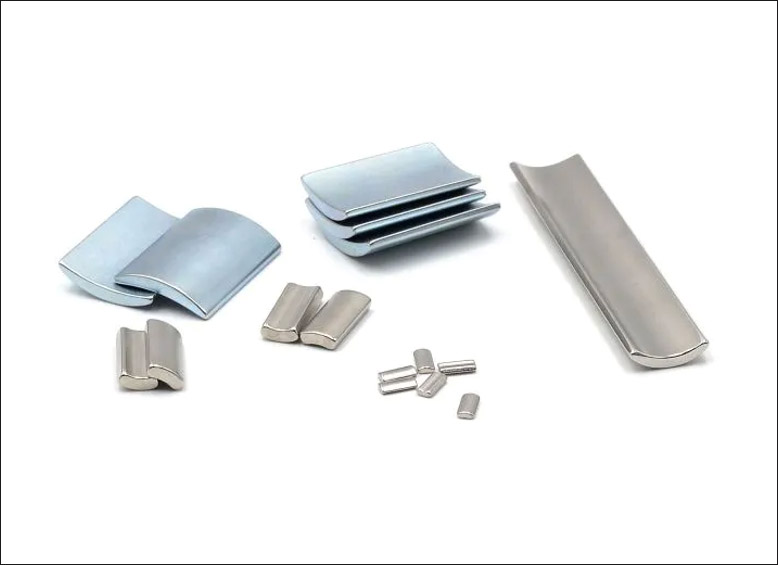The magnet arrangement and magnet spacing of a brushless motor have an important impact on the performance of the motor, especially in terms of affecting the magnetic field distribution, torque pulsation and motor efficiency, and the following is an introduction centered on these 2 points.
Common forms of magnet arrangements are multi-tooth slot magnet arrangements and single-tooth slot magnet arrangements.
Neodymium arc-shaped magnets of different sizes and radians

The characteristic of multi slot magnet arrangement is that multiple small magnets are arranged on the stator or rotor of the motor for each pole pair. This arrangement can improve the uniformity of the magnetic field and reduce torque ripple. This helps the motor maintain stability when running at high speeds, making it suitable for high-performance, low-noise applications such as fans, drones, etc.
The characteristic of a single tooth slot magnet arrangement is that each pole pair corresponds to a single magnet, usually with a larger volume and concentrated magnetic flux. The advantage of this ranking is that it has a relatively simple structure and lower manufacturing costs. The arrangement of single tooth slot magnets can generate a large torque, which is suitable for motors that require high power output, such as industrial motors, wind turbines, etc.
Factors affecting the choice of arrangement;
Motor speed: High-speed motors usually use a multi-cog and slot magnet arrangement to reduce magnetic field pulsations and noise; low-speed, high-torque motors are more likely to use a single-cog and slot arrangement.
Motor power: higher power motors usually use a single cogging arrangement to better utilize the magnetic flux; lower power motors pay more attention to the uniformity of the magnetic field and are suitable for multi-cogging arrangements.
Operating environment: motors in harsh environments may require specially designed magnet arrangements to improve vibration and demagnetization resistance, such as the use of high-performance magnets such as neodymium-iron-boron (NdFeB) magnets.
Magnet spacing usually refers to the angle or physical distance between neighboring magnets. When designing a motor, the magnet spacing needs to be calculated precisely to ensure an even distribution of the magnetic field for optimal motor performance. For brushless motors, the magnets are usually arranged in an alternating pattern, where the N and S poles are arranged in sequence, forming what is known as an “alternating pole” pattern. The purpose of this is to create a rotating magnetic field that allows the rotor to rotate continuously.
In practice, the number of magnets and the angle between them is determined by the design specifications of the motor. For example, in a three-phase brushless motor with a 120-degree electrical angle of phase change, there will typically be six poles (three pairs of poles), each of which occupies the space of a 60-degree mechanical angle (since the electrical angle is twice the mechanical angle).
Balance between magnet spacing and motor performance;
Smaller magnet spacing can provide higher torque, but may introduce higher torque pulsations. By optimizing the ratio of pole pairs to number of slots, it is possible to increase torque output while reducing pulsation.
Smaller pitch with a multi-pole magnet arrangement increases the power density of the motor, but increases the magnetic field inhomogeneity and requires more accurate motor control algorithms to compensate for this effect.
The demagnetizing effect of magnets is more pronounced in high temperature or high current environments. Proper magnet spacing can reduce this effect and extend the life of the motor.
The design of the magnet arrangement and spacing needs to be optimized according to the specific application requirements, and the best configuration usually needs to be found through simulation and experimentation.
Other brushless motor magnet related articles;
How to detect the magnetic pole pairs of brushless motors?
Do brushless motor magnets affect motor speed?
 China Neodymium And Ferrite Magnets Manufacturer & Supplier
China Neodymium And Ferrite Magnets Manufacturer & Supplier 


